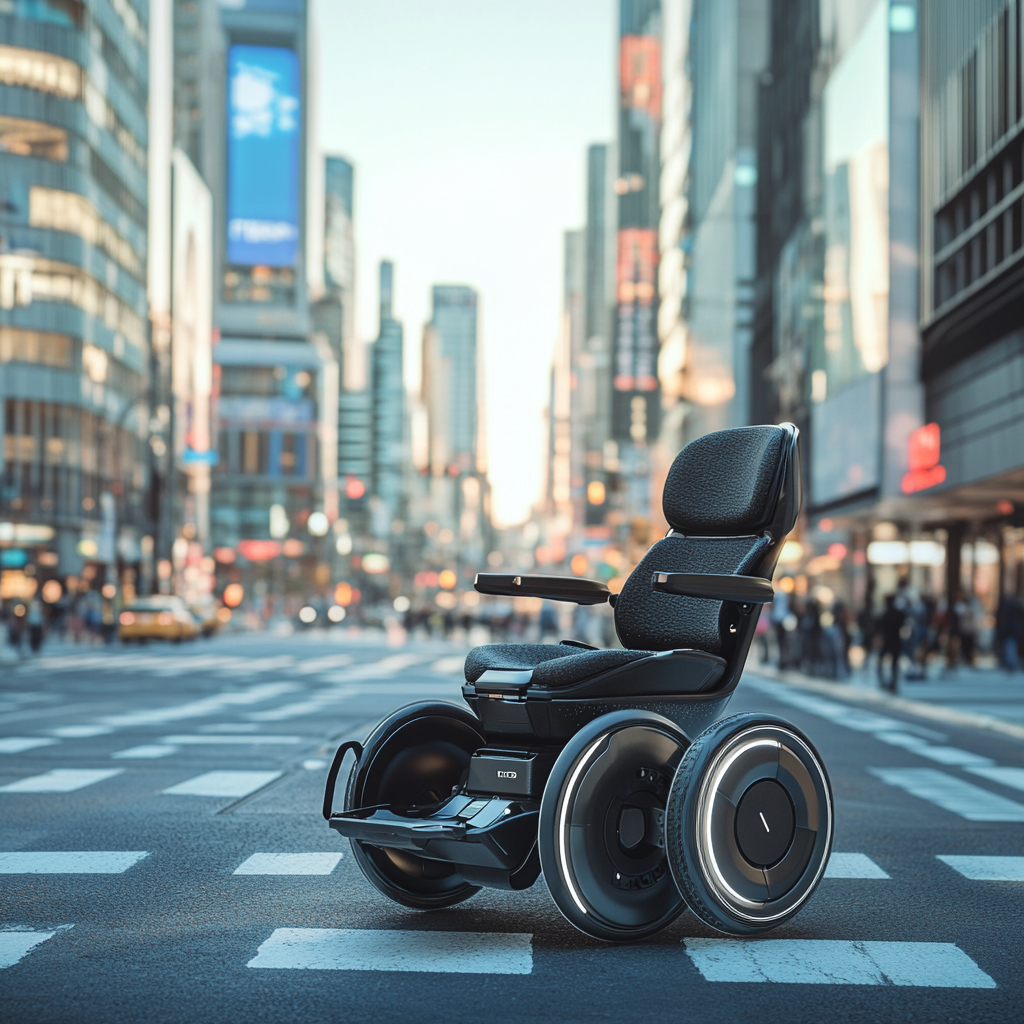
Intelligent Mobility Device Revolutionizes Independence and Navigation
Smart Robotic Wheelchairs: The Future of Mobility
When you think of wheelchairs, what comes to mind? Standard mobility aids, perhaps—a necessitative piece of equipment that helps those with mobility challenges get from Point A to Point B without a hitch. But let's face it, this dial isn’t merely about transportation anymore; it’s about empowerment. Welcome to the brave new world of smart robotic wheelchairs—those whirring marvels of technology designed to propel their users into the future. There's magic afoot, and it goes way beyond just a pair of wheels and a seat!
The Golden Age of Autonomous Access
Gone are the days when traditional wheelchairs were limited tools of mobility. Sure, they could help you traverse sidewalks or risk-life with a bold journey through grocery store aisles, but they couldn't think for themselves. Enter the smart robotic wheelchair, a game-changing companion for individuals with physical and cognitive disabilities. These aren't just gadgets; they are the Swiss Army knives of mobility, fusing technology and human need for a kaleidoscopic experience of independence.
Advancements in artificial intelligence (AI), the Internet of Things (IoT), and sensor technologies have practically set the stage on fire. We're talking autonomous wheelchairs that blend easy navigation with adaptive technologies. It’s akin to having a personal assistant—one that never needs coffee breaks!
And let’s be clear: they're not just pieces of tech floating around aimlessly. Devices like the CoNav chair from the University of Michigan use what's known as model predictive control (MPC). Think of it as a brainy little sidekick predicting the best route for you while keeping a watchful eye on the world around. These chairs learn and adapt, predicting the best path while dodging obstacles like a ninja in a shopping mall. There’s effort reduction, smoother navigation, and—let’s be honest—less chaos for everyone involved.
The Sensor Symphony: What’s Under the Hood
Let’s peek inside these technological marvels. They aren’t just cruising around on wishful thinking. No, sir! Smart wheelchairs come fully loaded with an array of sensors that would make even the most advanced robot blush! From LiDAR to IMUs (fancy speak for Inertial Measurement Units), these devices read their environment as though they were wearing super-powered glasses.
Imagine a wheelchair that can pick up obstacles in real-time, mapping out the optimal course while avoiding calamities like wayward pet cats or errant shopping carts. It's like playing chess—filling your king's mobility with strategy and foresight. Some of these systems offer astonishing centimeter-level accuracy, essential for tight spaces and doorways. With the DROVE system, it’s just one more way technology is reinforcing the independence of those who need it most.
Talking to Your Chair: Voice and Gesture Control
Let’s crank up the status quo a notch! Forget your run-of-the-mill joystick or push handles—smart wheelchairs are starting to listen! Yes, you heard it right; users can direct their chairs with simple voice commands. Got limited dexterity? No problem! Just tell your chair, "Go forward," or "turn left," and voilà! Off you go with hands-free navigation. It’s a sci-fi dream come true for many.
And while we are on the topic of innovative controls, the integration of gesture-control systems will have you rethink how you interact with mobility aids. Picture this: you tilt your smartphone, and your chair glides smoothly across the floor, all thanks to your smart device's gyroscope. The days of wrestling with cumbersome controls are swiftly fading into the background.
Battery Management: Keeping the Wheels Turning
But how do you keep all this wizardry running smoothly, you ask? Enter state-of-the-art battery management systems that ensure your high-tech mobility aid doesn’t leave you stranded in the middle of the supermarket—talk about an unplanned dramatic scene! These systems provide real-time updates on battery usage and lifespan, letting users know just how long they can roll before needing to juice up. Plus, safety features like the BotBeep can help prevent any, let’s say, embarrassing moments as you navigate slopes and staircases.
Design Meets Function: The User-Centric Approach
The best part? These smart chairs take a user-first approach. Think of them as your trusted buddies in navigating the world. The CoNav chair especially embraces the “human-in-the-loop” concept, allowing users to maintain a firm grip on the reigns. It doesn’t overpower; instead, it works with you. Users can guide the chair while it provides support in decision-making, enriching the overall experience and ensuring seamless control.
What’s more, these smart aides can morph and learn based on your preferences. The adaptive control features adjust to your maneuvers over time, fine-tuning themselves to provide an effortless navigation experience. If you've ever felt the cognitive load of juggling controls, this could feel like shedding a backpack full of bricks.
Life-Changing Impact: User Testimonials
Now, let’s talk about what really matters—the human experience. People who have been lucky enough to test these innovative models rave about dramatic shifts in their day-to-day lives. We're talking opportunities for independence that bring tears of joy. With smart robotic wheelchairs, the world opens up a little wider, allowing users to embrace freedom with newfound gusto. From silent satisfaction in being able to navigate their homes to confidently exploring communities, the emotional impact is profound.
Imagine a life filled with choice, spontaneity, and ease. It’s all within reach thanks to these thinkers on wheels, redefining life for those in need.
Conclusion: A New Era of Empowerment
So there we have it. Smart robotic wheelchairs aren’t just nifty gadgets; they're transformative tools that integrate AI, IoT, and cutting-edge sensor technology. They’re revolutionizing mobility, turning once-daunting journeys into simple tasks that foster autonomy and enhanced quality of life. With every stride forward in technology, we can look forward to expanded horizons for individuals with disabilities.
Want to stay up to date with the latest news on smart wheelchairs and other assistive technologies? Subscribe to our Telegram channel: @channel_neirotoken for the latest updates and insights.

